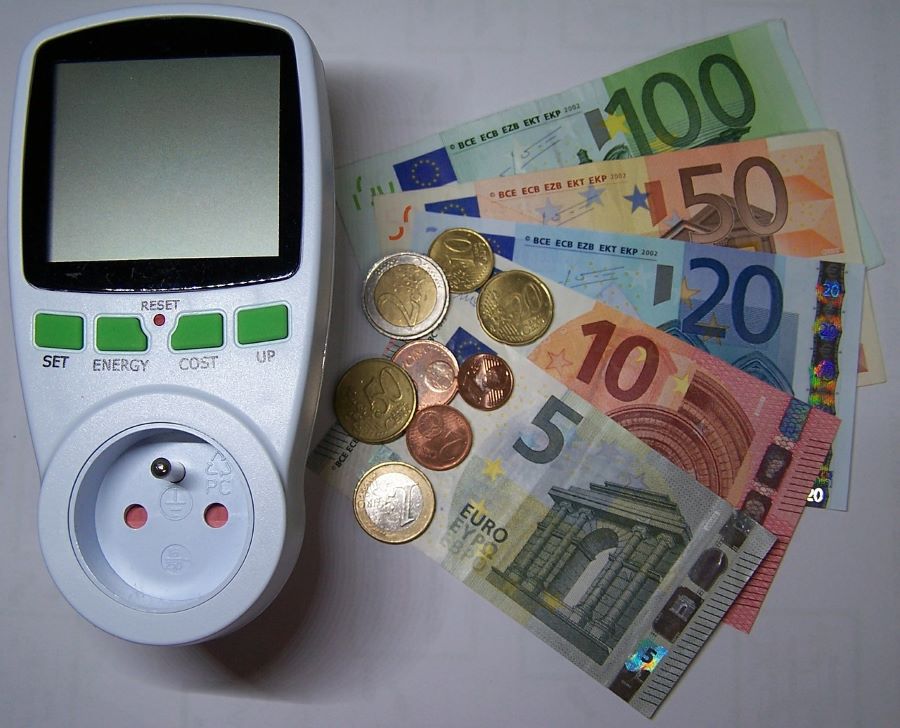Energy prices have risen the most in Spain among all EU member states. According to European inflation data for the month of June released by Eurostat, electricity in Spain is now 37.1% more expensive than in June 2020. A figure unparalleled across the EU, with only Estonia coming close at 31.4%.
The June figure is the highest in Spain’s entire historical sequence – which goes back to 1997 – and is the third consecutive peak since April last year, when electricity inflation reached 36.9%. In March of that year, it was 14.6%. Subsequently, annual inflation fell by six tenths of a percentage point in May before picking up again to 37.1% in June.
Most expensive month of the year
These increases are in line with those of energy prices in the Spanish daily wholesale market – where companies buy the electricity they sell to consumers and whose prices are then passed on in the electricity bill. According to data from OMIE, the operator of the electricity market in Spain and Portugal, June was again the most expensive month of the year, with the average monthly cost rising to €83.3 per mW/h, up 172% from the €30.62 paid in June last year.
Moreover, it does not look like the price increase will slow down in July. So far this month, the average daily price on the wholesale market has increased to EUR 91.26 per mW/h, 9.5% more than in June last year. This figure is almost three times higher than last year, when it was 34.64 euros per mW/h.
Up after historic decline
In the year of economic recovery, electricity prices have shot up all over Europe, inflation in the EU rose by an average of 8.1% year on year, which is a record high. In fact, the increase in Spain is almost four times the EU average.
The high electricity inflation in 2021 is due to the collapse in prices during last year’s severe curbs and the following months. In April 2020, electricity prices fell by 19.9% year-on-year, the biggest drop in history. In May, prices remained at a low point and in June they slowly started to recover, although they were still 10.6% below the levels recorded in 2019. The increase Spain experienced in June is significantly larger than the decrease in the same month of the previous year.
VAT cut cannot prevent further rise
The government has approved a reduction in VAT on electricity bills from 21% to 10%. It took effect on 26 June, but does not appear to be sufficient to halt the price increase. According to the Organisation of Consumers and Users (OCU), if July’s trend continues, the average bill for households with regulated tariffs – for 39% of all consumers – will rise to €72.2 in July, 5% more than last month. Without the VAT reduction, the cost would have risen to €79.4 in June, the most expensive bill in history, according to the OCU.
The consumer organisation attributes the high prices to the increase in the price of natural gas and the rise in the price of CO2 rights, which have no prospect of falling in the short term.
Electricity and transport prices drive inflation
High electricity and transport prices in Spain have driven up overall inflation, which reached 2.5% year-on-year last month, up a tenth of a percentage point from May. The national consumer price index (CPI) is 0.3% above the European average, which fell to 2.2% in June. However, Spain is still far from the level of countries such as Hungary (5.3%), Poland (4.1%) or Estonia (3.7%), which occupy the top positions in Europe.
Spain leads Europe in the 10.7% increase in prices for housing, water, electricity, gas and other fuels. That this figure has been boosted by high energy prices is shown by the fact that rents are only 0.6% above last year’s level. Water prices rose 0.5% and gas prices even fell by 0.6% compared to 2020.
Transport prices are the second fastest growing category, up 8.5% in June on last year – six tenths of a percentage point less than in May – significantly above the EU average of 6.6%. On the other hand, prices of hotels and restaurants, which were 1.5% lower in June than last year, are still not recovering.


